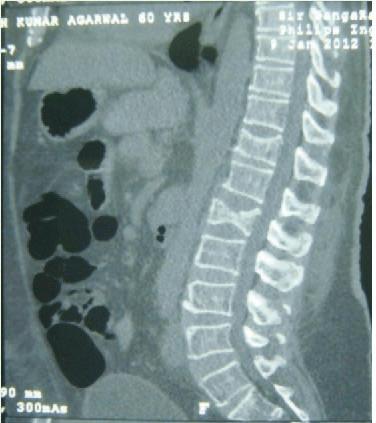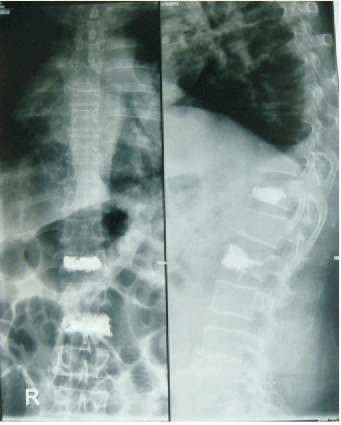Balloon Kyphoplasty in Vertebral Compression Fractures
Introduction
Kyphoplasty is a minimally invasive surgery for spinal vertebral fractures which should be performed ideally in the first three months of fracture. In this small key hole incision is made percutaneously into the skin. Through the incision a deflated balloon is entered into the fractures bone and inflated in place slowly so as to fill the cement with in collapsed segment in order to regain the normal shape and stability.
What are Vertebral Compression Fractures?
As age progresses our bones become weak and fragile thus leading to fractures even by minimal trauma like picking up a bucket or slipping in the room or diseases like cancer. One of the major causes of the vertebral fractures is Osteoporosis i.e. bone weakening due to decrease the calcium levels. It is more common in females above 40 years of age after menopause i.e. stop of normal menarche cycle as after which the calcium levels in body are significantly reduced. But balloon kyphoplasty cannot be used in every kind of vertebral fractures. It can only be helpful in vertebral compression fractures with an intact posterior wall of the vertebra. In case the posterior vertebral wall is fractured we cannot do kyphoplasty as the cement may leak out on the spinal cord which may lead to weakness in the leg or paralysis. In such cases we should go for fixation rather than kyphoplasty to stabilize the fracture.
What are the causes of vertebral fractures?
• Osteoporosis
• Injury- fall/accident
• Pathologicaldue to tumours


Frequently Asked Questions
Am I candidate for surgery?
Your surgeon and you are the best judge to decide whether to undergo the surgery or not. Ideally with in first three months of the fracture you should undergo the procedure for best results.
The indications for surgery are-
• If the patient is in acute pain which is not bearable and/or is radiating,
• If the patient is osteoporotic as bone will not heal due to poor bone quality,
• If patient is diabetic then also surgery is indicated as chances of healing are reduced in diabetic patients.
What are the goals for surgery?
• Stabilizing the fracture site &
• Providing early and safe mobilization
How will I be benefitted out of this surgery?
• There will be significant reduction in back pain.
• Early independent mobilization can be done by the patient.
• Improved Quality of life.
Are there any tests that I need to perform prior to the procedure?
Yes, there are a set of investigations known as PAC (Pre Anesthetic check up) that you are required to undergo before surgery so as to be declared FIT for surgery by the anesthesia team.
How much time is required for surgery?
It takes around 45 minutes to 90 minutes to perform the surgery depending upon patient to patient.
How much time do I need to stay in hospital?
Patients may spend one day in the hospital after the kyphoplasty procedure. Usually the patient is made to ambulate the same day following the surgery.
When do I need to get admitted for the procedure?
Once your procedure date is confirmed with our team, you need to be admitted a day prior to surgery so that we can carry out the general investigations required to consider you fit for surgery.
Are there any contraindications for surgery?
The main contraindications to kyphoplasty are-
• Any blood coagulation disorder
• If tumor or infection is suspected at the fracture site
• If posterior wall of the fractured vertebrae is collapsed
• Pregnant females
How much incision will be left after surgery?
It is a minimally invasive technique. Usually two small incisions are made at the back of the patient.
Will the surgery be performed under local or general anesthesia?
This procedure is generally done under general anesthesia. It can also be performed under local anesthesia but as the patient has to lie on his stomach i.e. prone position during the procedure; it increases the pressure over the heart and thus distresses the patient.
What will happen if I leave the fracture untreated?
• Spinal deformity will occur with hunched back
• Severe backache
• Loss of height due to collapsed fracture
• Quality of life will be reduced
• Reduced lung function, gastric distress
• Sleeping disorders as the pain interfere with the sleep
• Risk of other vertebral fractures increases.
What are the Risks and Complications of Kyphoplasty?
Generally it is a very safe and minimally invasive procedure but some complication may occur due to anesthesia and the surgery which are-
• Pain, chest complication, nausea and vomiting due to the side effect of anesthesia.
• It may lead to the incidence of cement leakage in 5% cases thus irritating the nerve root and causing pain and inflammation.
• If cement leaks into spine canal paralysis can occur.
• It may lead to rupture of balloon while inflation in situ thus causing cement leakage.
• Infection may occur as a complication.
What is the success rate?
Kyphoplasty surgery has a success rate of approximately 90% to 95%, although 5% to 10% of patients may develop nerve root irritation or/and pain may persist.
What will be the cost for the surgery?
Usually the surgery will cost from around 1.5 lakhs to 2 lakhs depending upon the balloon used for kyphoplasty.
What are the restrictions that I need to take following surgery?
• Restriction from bending, lifting, or twisting for the first six weeks following surgery.
• Advised not to lift heavy objects for 12 weeks following the surgery.
• Assistive devices may be used if required.
When is the follow up required post surgery?
Usually you have to come after 2 weeks post surgery and further follow up as required by doctor. You are also required to see the surgeon if any of the below mentioned symptoms may occur-
• Fever
• Any inflammatory signs such as redness, swelling etc.
• Any drainageor blood oozing from incision site.
• Severe backache.
• Numbness
• Tingling
Can I drive after surgery?
No, you should not drive until it’s approved by the doctor in charge. Ideally you should wait for 2 weeks and then can drive if permitted as per your condition.
Do I need Post operative Rehabilitation or therapy?
Yes you need to under go physical therapy under a trained physical therapist initially. The therapist will make you-
• Perform the activities of daily living, for ex. lying to sitting; to stand.
• General conditioning exercises.
• Deep breathing exercises.
• Gentle stretching exercises.
• Understand the proper postural stability.
Do I need to take prior appointment for the procedure?
Yes, one has to take a prior appointment so that the required arrangements are made beforehand. You can the contact the following person for taking an appointment CLICK HERE TO CONTACT US.
Tentative dates for admission and surgery will be provided to you.
Does this procedure come under the insurance Policy?
Yes, kyphoplasty comes under your insurance cover. Rest you can confirm the same once, with our admission desk team/ TPA team. Carry along your insurance card and your insurance policy with you.
